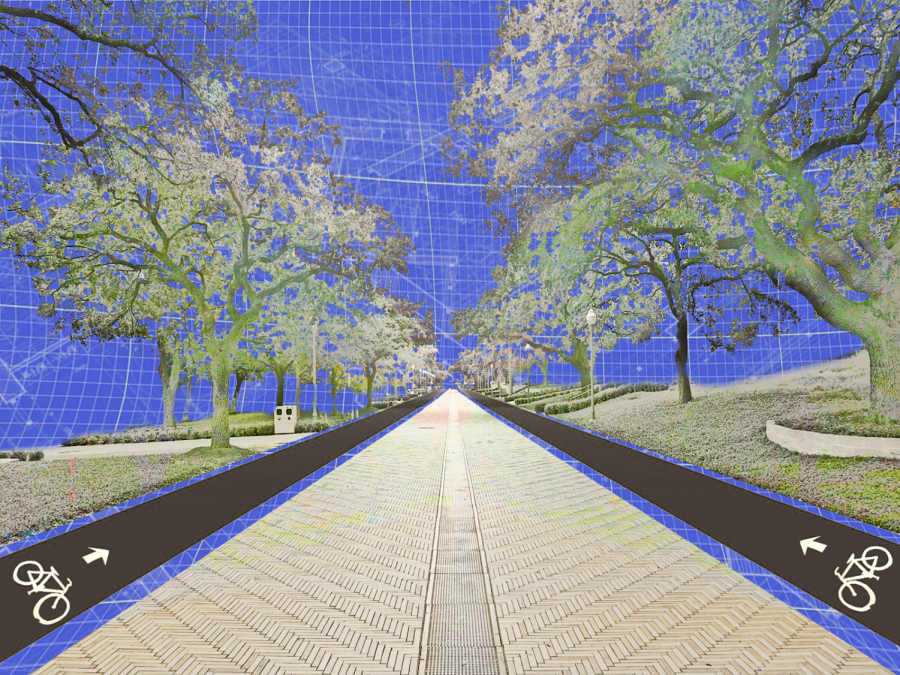UT should install protected bike lanes on campus
March 9, 2022
In recent years, the University and the City of Austin have worked to make biking more accessible to students through initiatives such as the MetroBike sharing program and the Orange Bike Project. However, few improvements have been made to biking spaces for students and faculty.
On campus, there are no bike lanes other than the lane from Dean Keeton Street to Clyde Littlefield Drive, which was recently added in 2019. To bike on any other road, cyclists have the choice of cramming on crowded streets and sidewalks or biking on the roads alongside cars and buses.
To more effectively promote biking among students and faculty as well as protect cyclists and pedestrians, UT must install separate, protected bike lanes on crowded campus roads.
UT has expressed interest in making campus more walkable and bike-friendly. In an emailed statement, Veronica Trevino, media manager for Financial and Administrative Services, highlighted UT’s commitment to working with bikers and other community members to keep students safe.
“Mobility and transportation options and safety are critical issues for our campus, and all forms of transportation are addressed in our plans. The University works with staff and various stakeholders, including bicyclists, to determine decisions about campus road development,” Trevino said in the email. “The University appreciates the thoughtful perspectives of cyclists and all campus community members, who continue to bring positive ideas to improve transportation options and safety on campus.”
Trevino also pointed out existing projects to make students safer, including the redesigning of Speedway back in 2016 which barred non-commercial and construction vehicles from driving and parking on the street, and was designed with community input.
While projects like these are a great start to making campus safer for pedestrians, streets like Speedway group walkers and bikers together, which can be challenging especially during crowded passing periods. Current construction also limits the space that students have on the street due to needed vehicles.
“It’s kind of uncomfortable sometimes, especially when Speedway’s too crowded,” Alex Hernandez, government and urban studies sophomore, said. “You have to guesstimate how fast you can cross before a bike crosses you.”
Other roads where cars are allowed likewise present further risks, as cyclists have to navigate crowded spaces and aggressive drivers.
“I definitely have felt unsafe riding my bike on 21st Street or Inner Campus Drive because of the amount of cars there,” Ethan Plevak, geography, sustainability studies and urban studies fifth year, said. “When (cars) finally get a chance to turn, they just go for it and they don’t really look to see if there’s any bike or anyone in front of them.”
Plevak also suggested protecting existing lanes by separating them from car-occupied roads.
“On Rio Grande Street (in West Campus), they have the bikes separated from the cars by concrete. I feel like that kind of bike lane would be better than just the lines separating the road from the bike lane,” Plevak said. “Better protected lanes would be nicer.”
While UT has worked towards making campus safer for students, it is clear that there is room for improvement. Installing protected bike lanes alongside campus roads would be another step towards this goal.
Arni is a Political Communication and Urban Studies sophomore from Austin, TX.











